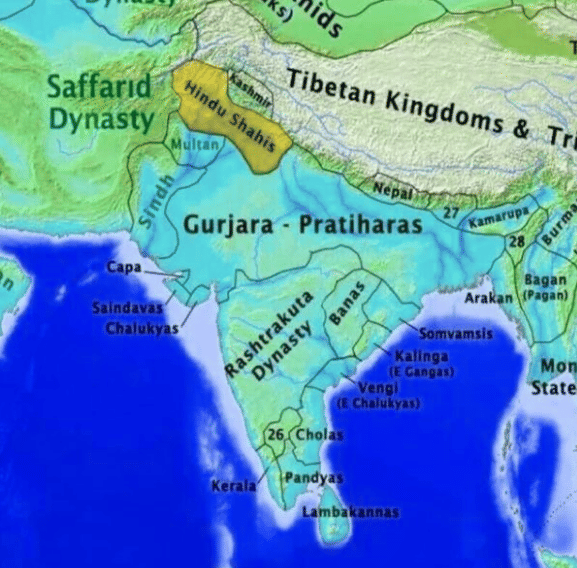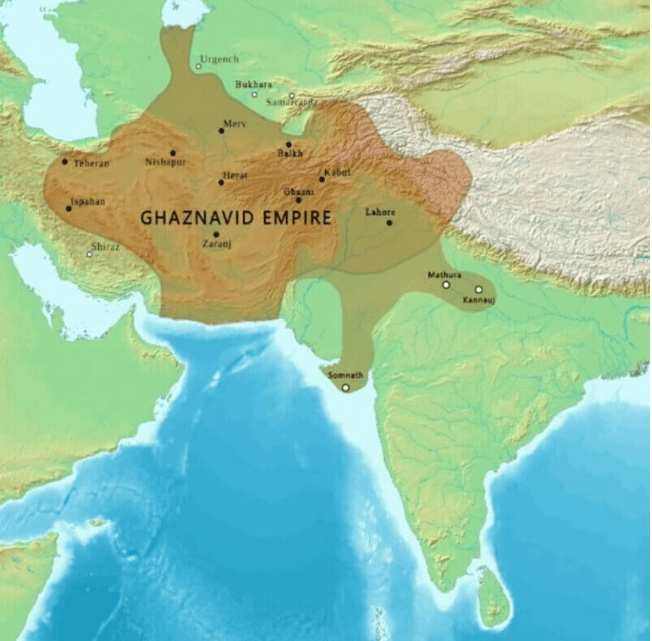Religion: Islam and its arrival in India | History Optional for UPSC PDF Download
Introduction
During the early 7th Century, two major powers outside India and China were:
- The Sassanid Empire: A Zoroastrian nationalistic dynasty that ruled Persia (modern-day Iran).
- The Eastern Roman Empire/Byzantine Empire: An orthodox Christian empire (the Catholic Western Roman Empire had fallen around 480 CE).
From 602 to 628 CE, these empires were in constant conflict, particularly in the regions of modern-day Iran, Jordan, and Syria.
- Arab Peninsula: The Arab Peninsula was home to numerous polytheist tribes. These tribes were engaged in caravan trade, selling luxury goods to the Byzantine Empire (Constantinople) and the Sassanid Empire (Persia). The caravan trade routes contributed to the wealth of cities like Mecca and Medina.
- The long war between the Byzantines and the Sassanid Empire ended with the Byzantines defeating the Persians. However, the fall of the Sassanid Empire and the subsequent decline of the Byzantine Empire created a political and religious power vacuum in the Middle East.
- The prolonged wars between Rome and Persia led to economic decline in the region. The demand for Arab luxury products decreased during the conflict, and the lack of pilgrimage to polytheist sites during the war negatively impacted the economies of Mecca and Medina.
- With the Byzantines' victory, monotheistic ideas, including tales of Jesus and Moses, began to spread rapidly in the Middle East. During this period, Muhammad, who later became known as Prophet Muhammad, was born into the powerful Quraysh tribe of Mecca.
- According to tradition, he experienced visions of God and the angel Jibril (Gabriel), which inspired him to preach a new religion centered around the worship of one god, Allah. This new religion, Islam, gradually united the diverse tribes of Arabia under a single faith.
- Prophet Muhammad is believed to have lived between 570 and 632 CE. In the Hijri calendar, his migration from Mecca to Medina, known as the Hijra, occurred in 622 CE.
- After the Prophet's death, the religious and political leaders of the Islamic community, known as the Ummah, were called Caliphs.
The important Islamic Caliphates
Rashidun Caliphate (632-661): The period of the four rightly guided caliphs.
- Ummayyad Caliphate (661-750): Ruled from Damascus. During this time, the spread of Islam reached the Indian subcontinent.
- Abbasid Caliphate (750-1251): Ruled from Baghdad. The caliphate was briefly transferred to the Mamluk Turks of Egypt after this period.
- Ottoman Caliphate (1517-1924): Ruled from Istanbul. The caliphate disintegrated after World War I.
The Islamic Conquest of Sind (712 CE)

- The Umayyad Caliphate sent his 18-year-old nephew, Muhammad Bin Qasim, to conquer regions beyond Baluchistan.
- He defeated Dahir, the Chachaa ruler of Sindh, establishing Arab rule over the region, which became the starting point for further conquests.
The age of conflict (1000-1200 CE)
Decline of the Abbasid Caliphate and Rise of Turkish Power
- By the late 9th century, the Abbasid Caliphate began to decline, with distant regions of the empire gaining independence.
- This period marked the end of the Arab Golden Age in science and learning, as Turks from Central Asia (Turkestan) started to dominate the empire.
- The Turks initially entered the Abbasid Empire as palace guards and mercenary soldiers but eventually became powerful figures in the political landscape.
- Provincial governors grew more powerful, and the Caliph's role became largely ceremonial, merely formalizing the appointment of the Amir-ul-Umra(Commander of Commanders).
- These new rulers initially took the title ‘Amir’ but later adopted the title ‘Sultan’.
- The Turkish tribes brought their customs of looting and plunder from Central Asia, similar to earlier invasions in India by the Kushans,Sakas, and Huns.
- Their warfare strategy involved rapid raids and retreats, facilitated by their superior horses and ability to cover large distances quickly.
- Many kingdoms rose and fell quickly as the invading Turks frequently changed loyalties.
- Over time, through numerous wars, the Turks gradually converted to Islam, and a new class of soldiers known as Ghazi emerged. These soldiers were not only fierce warriors but also religious missionaries.
The Turko-Islam Ghaznavid Kingdom

Turkish Slave Alaptigin and the Ghaznavid Dynasty
- Alaptigin, a Turkish slave and former governor under the Samanids, established an independent kingdom in Ghazni, Afghanistan, in 962 CE.
- After the decline of the Samanid kingdom, the Ghaznavids emerged, taking on the role of defending Islam.
- Alaptigin's son,Sabuktigin(977-998 CE), became fully independent in 988 CE and was later known as Mahmud of Ghazni. He defended Afghanistan from Central Asian Turkish tribal invaders.
- Although the Persians adopted Islam, they never fully embraced Arabic culture.
- The history and conquests of the Persian kingdoms and the Ghaznavids were celebrated by the Persian poet Firdausi, who was Mahmud's court poet.
- In his epic poem Shah Namah, Firdausi depicted Mahmud as a legitimate Persian ruler, despite his Turkish origins.
The arrival of Islam in India
Mahmud of Ghazni's Attacks on India:
- Mahmud attacked India 17 times during his reign, initially targeting the Hindushahi rulers of Peshawar and Punjab, as well as the Muslim rulers of Multan.
- Battle of Waihind (1008-09): Fought near Peshawar between Mahmud and Hindushahi ruler Anandapala, who was allied with the ruler of Multan and the Khokars tribe of Punjab. Mahmud emerged victorious, capturing their territories.
- Notable raids by Mahmud included:
- Raid of Kanauj and Mathura (1018): Mahmud plundered these cities and returned with immense riches.
- Raid of Somnath Temple (1025): Mahmud raided the temple but did not annex the states he attacked.
- After Mahmud's death in 1030, his son Masud succeeded him but struggled to maintain the kingdom and was defeated by the Seljuk Turks.
- The Ghaznavids lost most of their territories, ruling only in Punjab and Ghazni, but continued their raids into India.
- Al-Biruni, a Persian scholar, accompanied the Ghaznavids and wrote Kitab-ul-Hind, detailing Indian society, culture, and kingdoms.
- Al-Biruni's account compared Indian thought with Greek philosophy and Sufi teachings, highlighting texts like the Gita, Upanishads, and Vedas.
- The Ghaznavid conquests paved the way for the spread of Islam in India, taking advantage of the infighting among Rajput kingdoms and setting the stage for future Islamic conquests and the establishment of sultanates.
Mahmud of Ghazni's Attacks on India:
- Mahmud attacked India 17 times during his reign, initially targeting the Hindushahi rulers of Peshawar and Punjab, as well as the Muslim rulers of Multan.
- Battle of Waihind (1008-09): Fought near Peshawar between Mahmud and Hindushahi ruler Anandapala, who was allied with the ruler of Multan and the Khokars tribe of Punjab. Mahmud emerged victorious, capturing their territories.
- Notable raids by Mahmud included:
- Raid of Kanauj and Mathura (1018): Mahmud plundered these cities and returned with immense riches.
- Raid of Somnath Temple (1025): Mahmud raided the temple but did not annex the states he attacked.
- After Mahmud's death in 1030, his son Masud succeeded him but struggled to maintain the kingdom and was defeated by the Seljuk Turks.
- The Ghaznavids lost most of their territories, ruling only in Punjab and Ghazni, but continued their raids into India.
- Al-Biruni, a Persian scholar, accompanied the Ghaznavids and wrote Kitab-ul-Hind, detailing Indian society, culture, and kingdoms.
- Al-Biruni's account compared Indian thought with Greek philosophy and Sufi teachings, highlighting texts like the Gita, Upanishads, and Vedas.
- The Ghaznavid conquests paved the way for the spread of Islam in India, taking advantage of the infighting among Rajput kingdoms and setting the stage for future Islamic conquests and the establishment of sultanates.
|
367 videos|995 docs
|
FAQs on Religion: Islam and its arrival in India - History Optional for UPSC
| 1. What were the key features of the important Islamic Caliphates? |  |
| 2. What was the significance of the Islamic Conquest of Sind in 712 CE? |  |
| 3. How did the age of conflict (1000-1200 CE) shape the Indian subcontinent? |  |
| 4. What was the role of the Turko-Islam Ghaznavid Kingdom in Indian history? |  |
| 5. How did Islam arrive in India, and what were its early impacts on Indian society? |  |
















